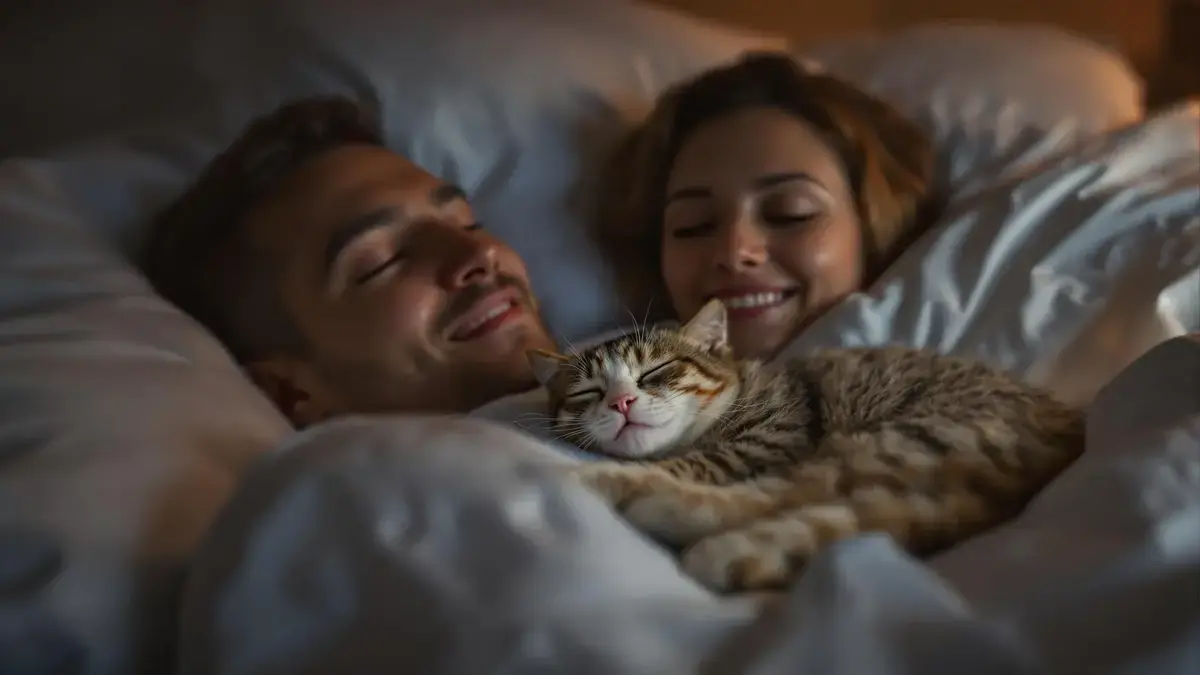Often perceived as independent animals, cats reveal fascinating behaviors when it comes to their sleep. Their tendency to sleep on their humans is a testament to a deep affection and trust. This behavior can be explained by their need for security given the vulnerability that sleep brings. By snuggling against their owners, they seek warmth and protection, while also marking their territory with their pheromones. These interactions reflect a unique bond between cats and humans.
Key Information
- Cats are independent animals that show their affection by sleeping on their owners.
- Their behaviors of closeness are linked to their need for security and warmth.
- Purring and human body heat soothe cats and strengthen their trust.
- Cats mark their territory by sleeping near you, which indicates a strong bond.
Understanding Cat Independence
Cats are often viewed as independent animals that can fend for themselves and make their own decisions. However, this image of the self-sufficient animal masks a more nuanced reality, especially in relation to their interactions with humans. In fact, a cat’s choice to sleep on its owner is a revealing behavior that speaks volumes about its attachment and trust.
Affection and Trust
When your cat cuddles up to you at night, it’s not just about warmth. Sleeping on a human demonstrates deep affection and, most importantly, trust. By choosing to position itself in a vulnerable state, that is to say, while sleeping, the cat shows that it feels secure enough in your presence to let itself drift off to sleep.
The Search for Nighttime Security
Cats, like many other animals, are naturally vulnerable while they are sleeping. During these moments of rest, they primarily seek to feel safe. Sleeping close to a human provides them with a sense of protection. The body heat of humans is also an important factor that comforts cats, thereby stimulating their need for closeness and connection.
Warmth and Collective Sleeping
Kittens naturally sleep together to stay warm, and this behavior persists into adulthood. This shows that the pursuit of warmth is not solely a physical need but also a need for social bonding. Sleeping together, whether with peers or their humans, strengthens this intimate relationship.
According to recent studies, here’s how long it takes for a cat to forget its owner
The Purity of Purring
A cat’s purring is often seen as a sign of well-being, but it also has a calming effect on those around them. Hearing the human heartbeat and the soft purring allows cats to find a serenity that helps them relax further. This contributes to creating an environment conducive to sleep, thus reinforcing their bond with their owner.
Territory Marking
Furthermore, cats also mark their territory by sleeping on their owners. The pads of these animals contain sebaceous glands that secrete pheromones, substances that serve to establish their scent mark. By sleeping on you, they send a clear message: you are part of their domain. This demonstrates their attachment and is a way for them to claim their place in your life.
Need for Attention and Protection
Cuddling against their owner actually indicates a need for attention and affection. Cats, while often seen as aloof, seek connection and interaction with their humans. They also aim to protect you by sleeping near you, reflecting a guarding instinct that further strengthens the bonds they share with their owner.
Safety Signaling
A cat’s choice to sleep on its owner’s stomach or between their legs is also significant. This shows a desire not only for warmth but also for security. These behaviors of marking, closeness, and seeking comfort are key elements that illustrate how cats interact with humans and how their behavior is influenced by their fundamental needs.
















